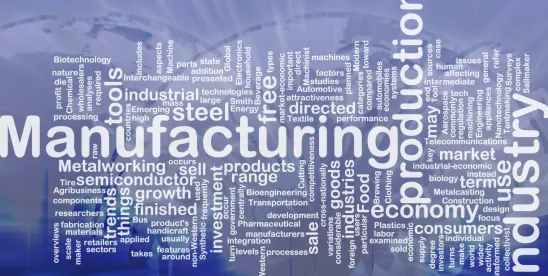“Made in the USA.” Few phrases can evoke as much passion and controversy as these four simple words, long the stuff of political campaigns, union demands, and small-town civic pride. Recently, the phrase has found renewed relevance. Powered by shifting politics, rising global tensions, and hard-learned lessons from pandemic-driven supply chain disruptions, the U.S. is experiencing a revitalization of domestic manufacturing.
One of the current administration’s core policy pillars is to revitalize U.S. manufacturing and bring back “Made in the USA” in a big way. Tariff policy is the most obvious embodiment of this initiative. But nearly all the administration’s key policy initiatives – energy independence, tax reform, environmental deregulation, labor and immigration reform, and even its criminal enforcement priorities – are intended to make American manufacturing (and the American worker) more competitive and attractive relative to global alternatives. No doubt, the agenda faces significant practical, political, and economic challenges, but these policies reflect an increasingly populist and nationalistic “America first” sentiment among a significant portion of the country.
Putting domestic politics aside, there are other important reasons for a resurgence of U.S. manufacturing. Geo-political tensions, most notably the threat of China’s economic and territorial ambitions, are one such reason. Whether it is from unequal access to Chinese markets, dictates that U.S. companies disclose and share their proprietary intellectual property, or the threat that essential supply chains throughout Asia are disrupted, perhaps permanently, by war, the risks are palpable. Manufacturers learned the devastating impact of supply chain disruptions the hard way during the pandemic. The Russian invasion of Ukraine and the western world’s response further underscored the risk of global supply chains. Rightly wary of putting all their eggs in one basket, the “reshoring” trend emerged, punctuated by the need for supply chain redundancy. The current global trade environment begs the question whether there is prudent and safe alternative for essential supply chains that lies entirely outside the United States. Economic factors must also be considered. Wage growth, increased regulation, and consistent “red tape” in China and other global markets have eroded the competitive advantage of manufacturing abroad instead of in the U.S. While it will take time, one would expect similar economic equalization to occur in “near-shoring” markets like Mexico. Simply put, U.S. companies are seriously questioning the conventional wisdom that it is always smarter, cheaper, and safer to manufacture abroad.
This shift is already happening. Manufacturers large and small are relocating or expanding capacity, investing billions into the domestic manufacturing sector. And we expect more U.S. manufacturers to take hard look at whether expansion should occur in the United States or overseas and, eventually, to consider reshoring manufacturing capacity that is currently abroad.
Those companies will have a lot to think about, and that is the point of this series. Key members of our Manufacturing Sector will share their experience and perspective on the critical issues that will arise, including how best to restructure existing supply chains and commercial relationships as part of this transition; where to locate new manufacturing facilities; how to capture available government and tax incentives; whether to employ a “build” or “buy” strategy; how to finance these projects; how to navigate environmental regulation and permitting requirements; strategies for securing sustained and cost-efficient energy sources, the cybersecurity and privacy risks inherent in new manufacturing technology during the age of “big data” and AI; and key considerations as companies recruit, develop and retain a new and expanded U.S. workforce.
As always, our goal is work hand in hand with our clients as they navigate a rapidly evolving manufacturing environment and a new era of “Made in America.” Together, we can help fuel an American manufacturing resurgence.




 />i
/>i
